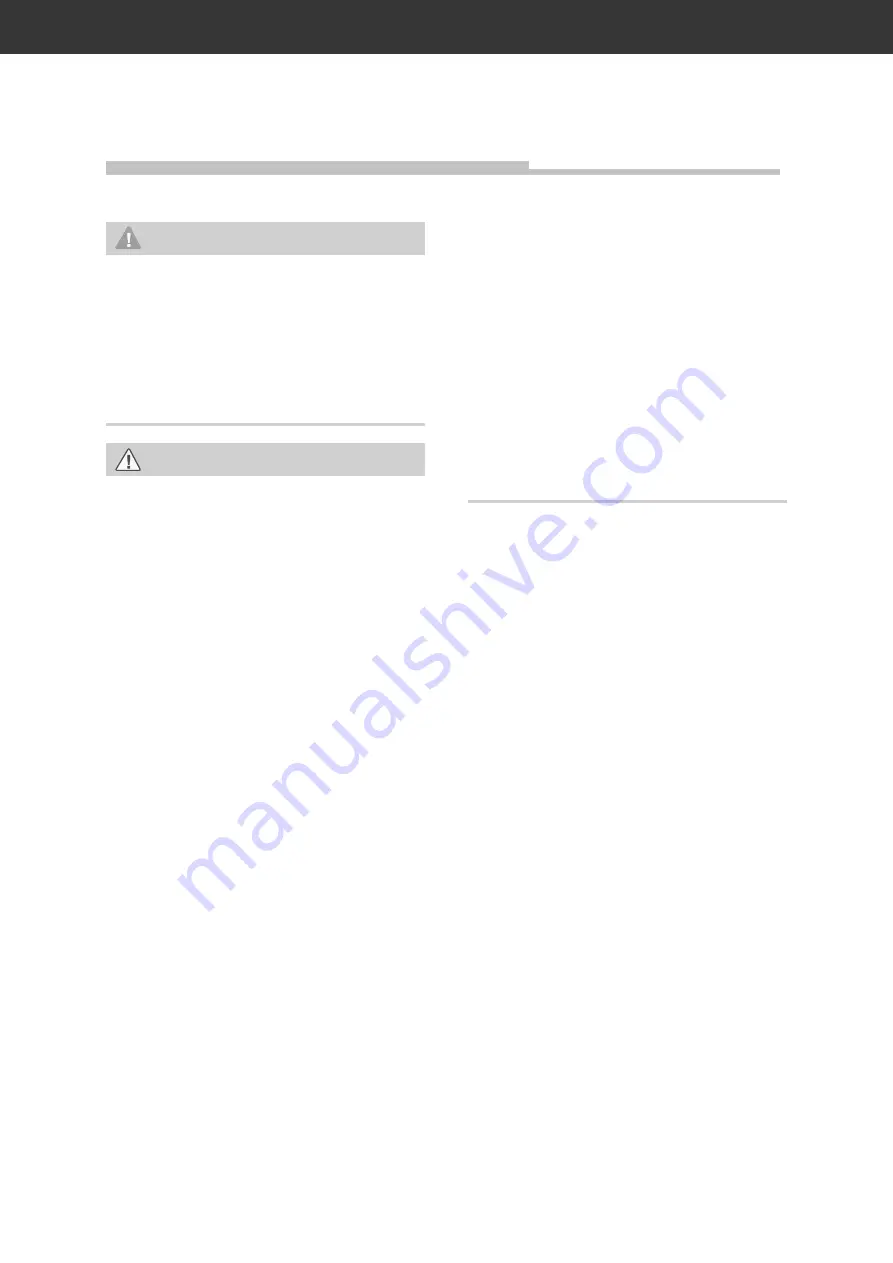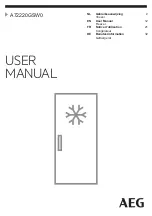
WARNING
Danger of explosion!
Improper handling of the appliance
may lead to an explosion.
■
Do not store explosive substances
or spray cans with flammable pro-
pellants inside the appliance as they
may create ignitable gas-air mixtures.
CAUTION
Health hazard!
Incorrect handling, insufficient cool-
ing or overlapping items can spoil the
stored food. This could lead to a risk of
food poisoning when consumed!
■
In particular, pack raw meat and fish
carefully to ensure that adjacent
food cannot be contaminated by sal-
monella or similar bacteria.
■
Abide by the storage times recom-
mended by food manufacturers.
■
Note that the shelf life of the frozen
food may be shortened due to a rise
in the temperature inside the freezer
(from defrosting, cleaning or power
failure).
■
If there is a mains failure, the frozen
food may remain sufficiently cold
for a few hours. In case of prolonged
mains failure or a longer malfunction
of the appliance, remove the stored
frozen food from the appliance and
keep it in a sufficiently cool place or
in another refrigerating appliance.
The maximum storage time in the
event of a fault is shown on the appli-
ance’s type plate.
■
After a malfunction, check wheth-
er the stored food is still edible. Con-
sume thawed and defrosted foods
immediately, do not refreeze.
Risk of injury!
Improper handling of the appliance
may result in injury. Risk of burns caused
by low temperatures.
■
The food and the inside walls of the
freezer have a very low temperature.
Never touch them with wet hands.
This can cause injury to the skin. Skin
damage can occur even with dry skin.
■
Let ice cubes or ice lollies thaw a lit-
tle before eating, do not put into your
mouth straight from the freezer.
• Follow the instructions in this chapter to
store your food over the longest possible
time in the best possible way.
Freezing food
Freezing means reducing the core tempera-
ture of fresh, room-temperature food to fro-
zen as quickly as possible – for best results
“flash-frozen”. If not cooled quickly enough,
the food will be “killed by frost”, i.e. the struc-
ture will be destroyed. A constant storage
temperature of –18 °C is needed to maintain
the food’s consistency, taste and nutritional
value.
Freezing food has a positive effect on its shelf
life. You can also avoid food waste in this way.
• Set the temperature in the freezer to
–18 °C and fill the fridge in such a way
that the temperature conditions inside are
optimally utilised, guaranteeing optimal
food storage:
– Place food to be frozen in the freezer
drawers (5) and (6)
• To achieve the most efficient use of ener-
gy for your appliance, combine the draw-
ers, glass shelves and door shelves as
shown in the diagram on page EN-11.
Freezing foods/storing frozen foods
Freezing foods/storing frozen foods
Page EN-18















































